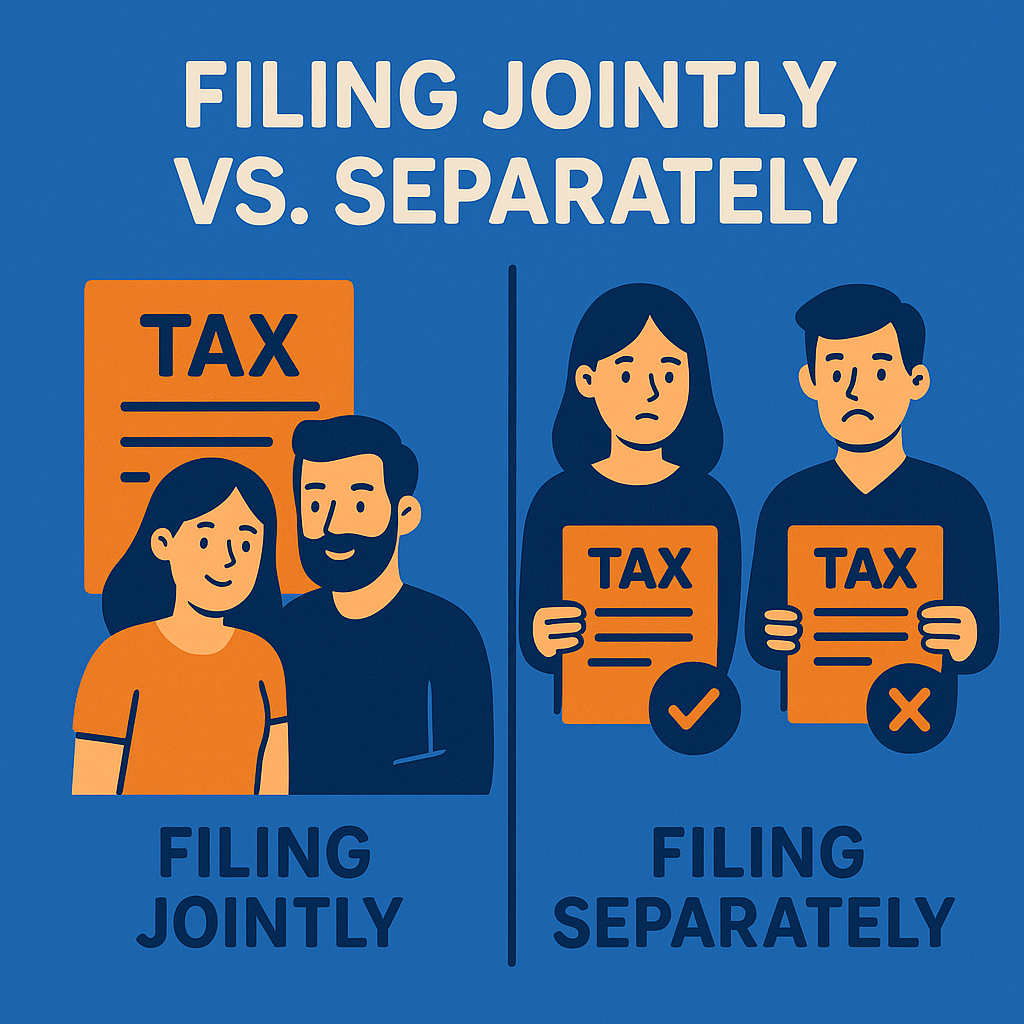What to Know About Filing Jointly vs. Separately
Married? Great! Now it’s time to choose how to file your taxes—jointly or separately. This choice can impact your tax rate, deductions, and refund. Here’s what you need to know before checking a box
👫 Filing Jointly: The Most Common Option
Married Filing Jointly means you and your spouse combine income and file one return together. This option usually offers the best tax benefits.
Pros:
Lower tax brackets for combined income
Higher standard deduction ($29,200 in 2025)
Access to key tax credits, like:
Earned Income Tax Credit (EITC)
Child Tax Credit (CTC)
Education credits (like the American Opportunity Credit)
Often leads to a larger refund or smaller tax bill
Cons:
You’re both responsible for any errors or unpaid taxes (joint liability)
If one spouse owes back taxes or child support, it could affect your refund
👥 Filing Separately: When It Might Make Sense
Married Filing Separately means each spouse files their own return, reporting only their own income and deductions.
This could be a good idea if:
One of you has significant medical expenses, and filing separately allows you to deduct more
You want to keep finances completely separate
One spouse has major tax debt or legal concerns
You both earn about the same, and deductions are balanced
But be careful—filing separately usually means:
You’ll lose or reduce access to many credits (EITC, student loan interest deduction, etc.)
You’ll have higher tax rates than joint filers
Both must itemize or both must take the standard deduction—no mixing!
📌 Final Tip
Filing jointly is usually the most tax-friendly option for couples, but if your financial situation is complex, it’s worth comparing both methods or speaking with a tax professional.

💡 Pro Tip: Use tax software or a tax preparer to run both scenarios—joint vs. separate—and choose the one that saves you the most.